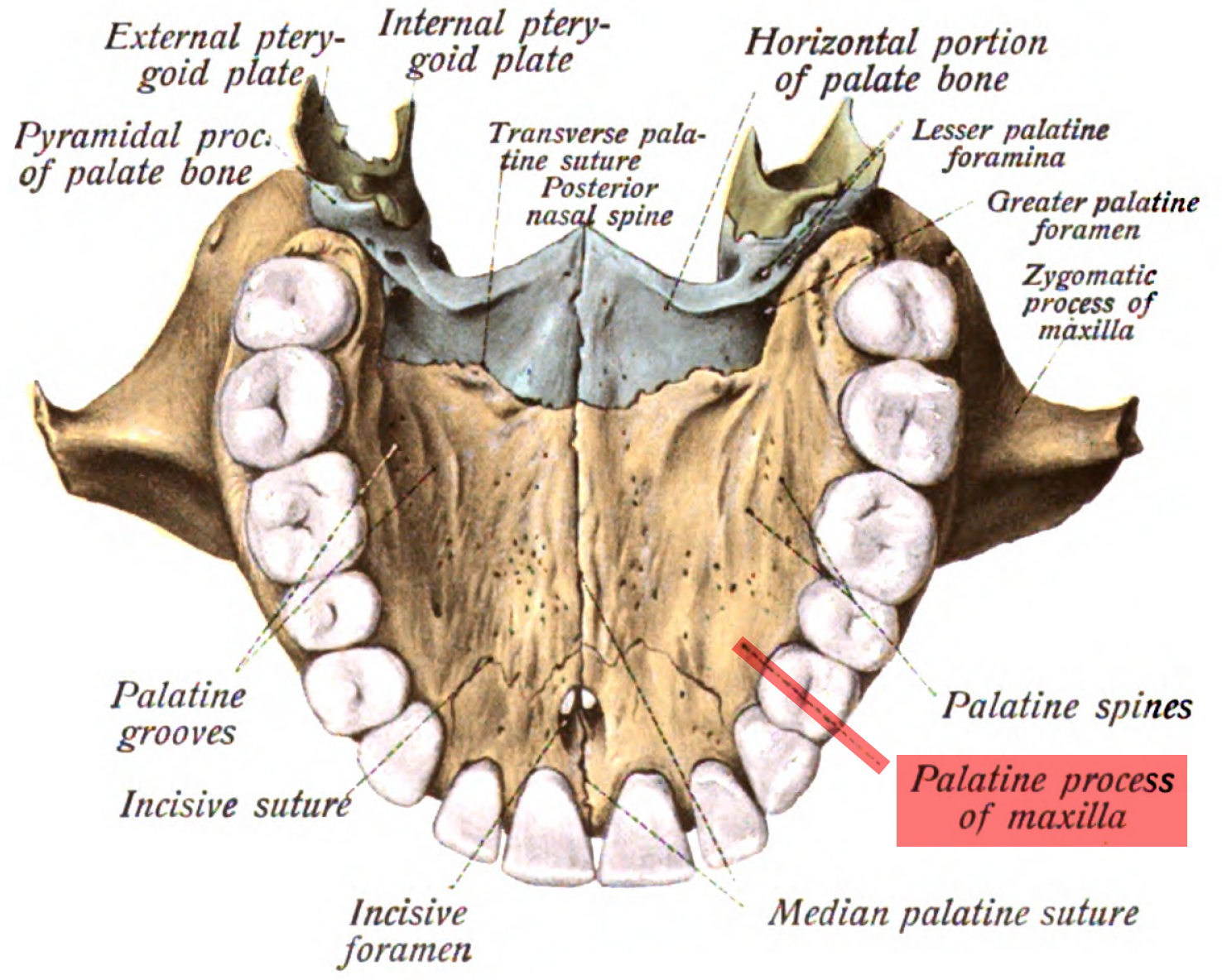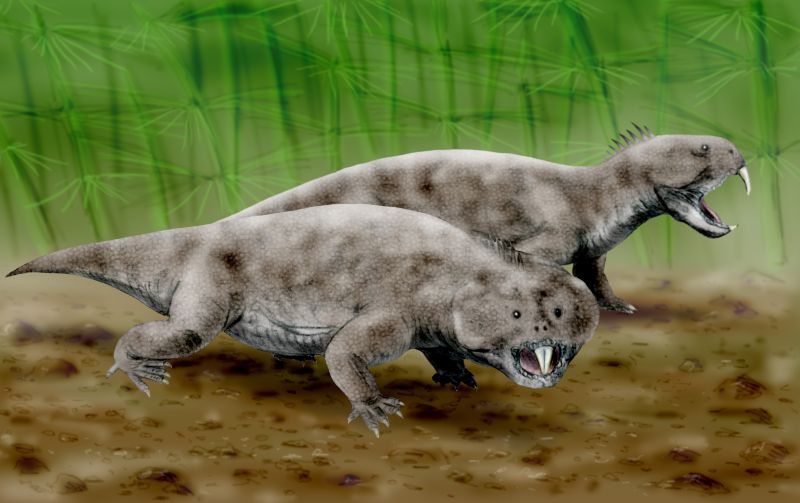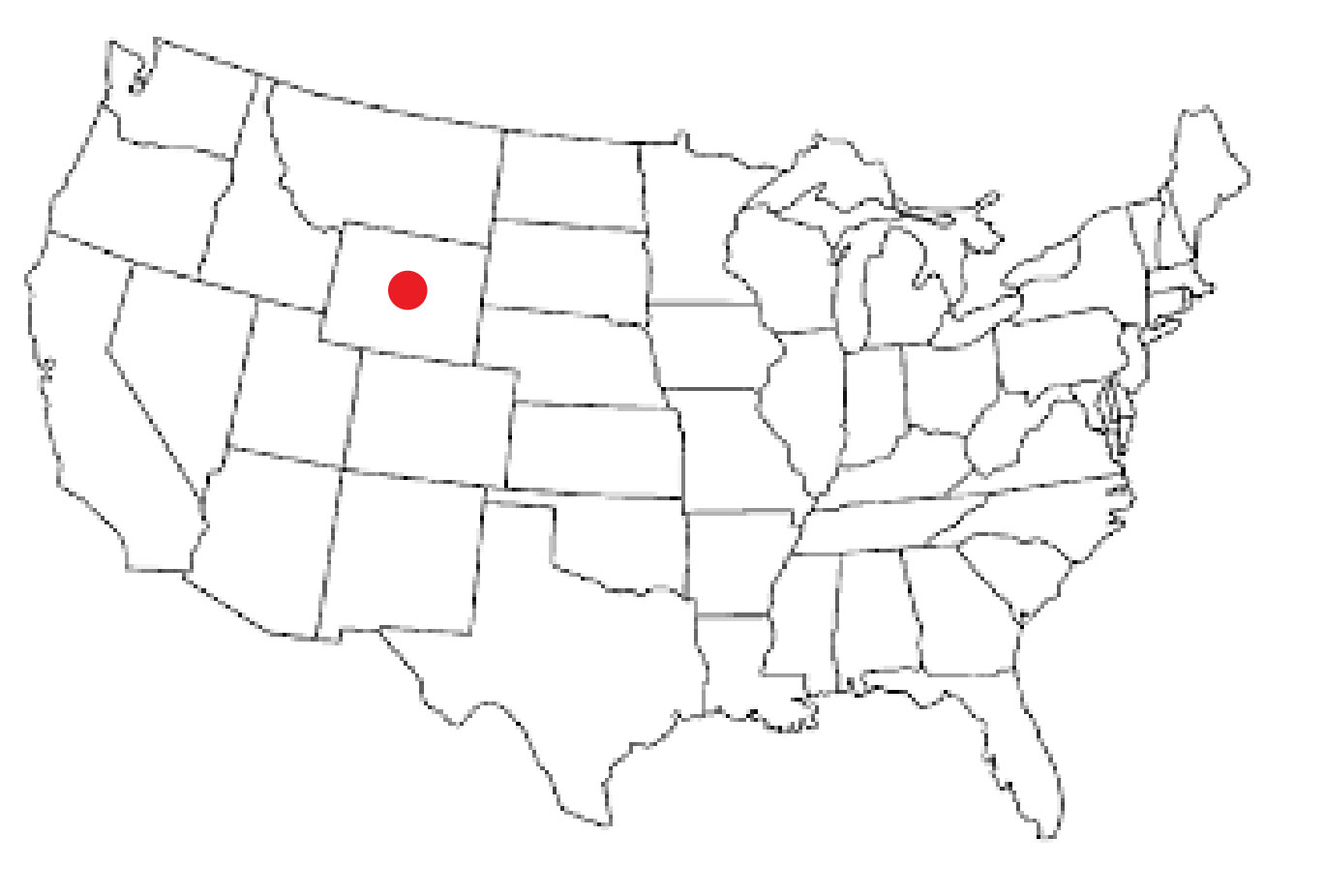|
Popo Agie Formation
The Popo Agie Formation is a Triassic geologic formation that crops out in western Wyoming, western Colorado, and Utah. It was deposited during the Late Triassic in fluvial (river) and lacustrine (lake) environments that existed across much of what is now the American southwest. Fragmentary fossils of prehistoric reptiles and amphibians, including pseudosuchian reptiles and temnospondyl Temnospondyli (from Greek language, Greek τέμνειν, ''temnein'' 'to cut' and σπόνδυλος, ''spondylos'' 'vertebra') is a diverse order (biology), order of small to giant tetrapods—often considered Labyrinthodontia, primitive amphi ... amphibians, have been discovered in the Popo Agie Formation. Dinosaur remains are also among the fossils that have been recovered from the formation, although none have yet been referred to a specific genus.Weishampel, et al. (2004). "Dinosaur distribution." Pp. 517-607. Paleobiota Amphibians Reptiles Synapsids See also * List ... [...More Info...] [...Related Items...] OR: [Wikipedia] [Google] [Baidu] |
Geological Formation
A geological formation, or simply formation, is a body of rock having a consistent set of physical characteristics (lithology) that distinguishes it from adjacent bodies of rock, and which occupies a particular position in the layers of rock exposed in a geographical region (the stratigraphic column). It is the fundamental unit of lithostratigraphy, the study of strata or rock layers. A formation must be large enough that it can be mapped at the surface or traced in the subsurface. Formations are otherwise not defined by the thickness (geology), thickness of their rock strata, which can vary widely. They are usually, but not universally, tabular in form. They may consist of a single lithology (rock type), or of alternating beds of two or more lithologies, or even a heterogeneous mixture of lithologies, so long as this distinguishes them from adjacent bodies of rock. The concept of a geologic formation goes back to the beginnings of modern scientific geology. The term was used by ... [...More Info...] [...Related Items...] OR: [Wikipedia] [Google] [Baidu] |
Metoposaurid
Metoposauridae is an extinct family of trematosaurian temnospondyls. The family is known from the Triassic period. Most members are large, approximately long and could reach 3 m long.Brusatte, S. L., Butler R. J., Mateus O., & Steyer S. J. (2015). A new species of Metoposaurus from the Late Triassic of Portugal and comments on the systematics and biogeography of metoposaurid temnospondyls. Journal of Vertebrate Paleontology. e912988., 2015: Metoposaurids can be distinguished from the very similar mastodonsauroids by the position of their eyes, placed far forward on the snout. Taphonomy Several mass accumulations of metoposaurid fossils are known from the southwestern United States and Morocco. These have often been interpreted as the result of mass deaths from droughts. Many individuals would have died in one area, creating a dense bone bed once fossilized. These mass accumulations of metoposaurids are often dominated by one taxa, such as ''Anaschisma'' or ''Metoposaurus''. Re ... [...More Info...] [...Related Items...] OR: [Wikipedia] [Google] [Baidu] |
Ilium (bone)
The ilium () (plural ilia) is the uppermost and largest part of the hip bone, and appears in most vertebrates including mammals and birds, but not bony fish. All reptiles have an ilium except snakes, although some snake species have a tiny bone which is considered to be an ilium. The ilium of the human is divisible into two parts, the body and the wing; the separation is indicated on the top surface by a curved line, the arcuate line, and on the external surface by the margin of the acetabulum. The name comes from the Latin (''ile'', ''ilis''), meaning "groin" or "flank". Structure The ilium consists of the body and wing. Together with the ischium and pubis, to which the ilium is connected, these form the pelvic bone, with only a faint line indicating the place of union. The body ( la, corpus) forms less than two-fifths of the acetabulum; and also forms part of the acetabular fossa. The internal surface of the body is part of the wall of the lesser pelvis and gives or ... [...More Info...] [...Related Items...] OR: [Wikipedia] [Google] [Baidu] |
Poposaurus Gracilis
''Poposaurus'' (" Popo Agie reptile") is an extinct genus of pseudosuchian archosaur from the Late Triassic of the southwestern United States. It belongs to the clade Poposauroidea, an unusual group of Triassic pseudosuchians that includes sail-backed, beaked, and aquatic forms. Fossils have been found in Wyoming, Utah, Arizona, and Texas. Except for the skull, most parts of the skeleton are known. The type species, ''P. gracilis'', was described and named by Maurice Goldsmith Mehl in 1915. A second species, ''P. langstoni'', was originally the type species of the genus ''Lythrosuchus''. Since it was first described, ''Poposaurus'' has been variously classified as a dinosaur, a phytosaur, and a "rauisuchian". Like theropod dinosaurs, ''Poposaurus'' was an obligate biped, meaning that it walked on two legs rather than four. However, as a pseudosuchian, it is more closely related to living crocodilians than to dinosaurs. ''Poposaurus'' is thought to have evolved this form of locomo ... [...More Info...] [...Related Items...] OR: [Wikipedia] [Google] [Baidu] |
Hyperodapedon NT Small
''Hyperodapedon'' is a genus of rhynchosaurs (beaked, archosaur-like reptiles) from the Late Triassic period (Carnian stage). Fossils of the genus have been found in Africa, Asia, Europe and North and South America. Its first discovery and naming was found by Thomas Henry Huxley in 1859. ''Hyperodapedon'' was a herbivore that used its beaked premaxilla and hindlimbs to dig for plants in dry land. Description ''Hyperodapedon'' was a heavily built, stocky, animal. ''H. gordoni'' had total length around with skull length of to , but largest species, ''H. huxleyi'' had lower jaw about and skull length is estimated about . Apart from its beak, it had several rows of heavy teeth on each side of the upper jaw, and a single row on each side of the lower jaw, creating a powerful chopping action when it ate. It is believed to have been herbivorous, feeding mainly on seed ferns, and died out when these plants became extinct at the end of the Triassic. The diagnosis of ''Hyperodapedon ... [...More Info...] [...Related Items...] OR: [Wikipedia] [Google] [Baidu] |
Rhynchosaur
Rhynchosaurs are a group of extinct herbivorous Triassic archosauromorph reptiles, belonging to the order Rhynchosauria. Members of the group are distinguished by their triangular skulls and elongated, beak like premaxillary bones. Rhynchosaurs first appeared in the Middle Triassic or possibly the Early Triassic, before becoming abundant and globally distributed during the Carnian stage of the Late Triassic. Description Rhynchosaurs were herbivores, and at times abundant (in some fossil localities accounting for 40 to 60% of specimens found), with stocky bodies and a powerful beak. Early primitive forms, like '' Mesosuchus'' and ''Howesia'', were generally small and more typically lizard-like in build, and had skulls rather similar to the early diapsid '' Youngina'', except for the beak and a few other features. Later and more advanced genera grew to medium to medium large size, up to two meters in length. The skull in these forms were short, broad, and triangular, becoming ... [...More Info...] [...Related Items...] OR: [Wikipedia] [Google] [Baidu] |
Premaxilla
The premaxilla (or praemaxilla) is one of a pair of small cranial bones at the very tip of the upper jaw of many animals, usually, but not always, bearing teeth. In humans, they are fused with the maxilla. The "premaxilla" of therian mammal has been usually termed as the incisive bone. Other terms used for this structure include premaxillary bone or ''os premaxillare'', intermaxillary bone or ''os intermaxillare'', and Goethe's bone. Human anatomy In human anatomy, the premaxilla is referred to as the incisive bone (') and is the part of the maxilla which bears the incisor teeth, and encompasses the anterior nasal spine and alar region. In the nasal cavity, the premaxillary element projects higher than the maxillary element behind. The palatal portion of the premaxilla is a bony plate with a generally transverse orientation. The incisive foramen is bound anteriorly and laterally by the premaxilla and posteriorly by the palatine process of the maxilla. It is formed from ... [...More Info...] [...Related Items...] OR: [Wikipedia] [Google] [Baidu] |
Maxilla
The maxilla (plural: ''maxillae'' ) in vertebrates is the upper fixed (not fixed in Neopterygii) bone of the jaw formed from the fusion of two maxillary bones. In humans, the upper jaw includes the hard palate in the front of the mouth. The two maxillary bones are fused at the intermaxillary suture, forming the anterior nasal spine. This is similar to the mandible (lower jaw), which is also a fusion of two mandibular bones at the mandibular symphysis. The mandible is the movable part of the jaw. Structure In humans, the maxilla consists of: * The body of the maxilla * Four processes ** the zygomatic process ** the frontal process of maxilla ** the alveolar process ** the palatine process * three surfaces – anterior, posterior, medial * the Infraorbital foramen * the maxillary sinus * the incisive foramen Articulations Each maxilla articulates with nine bones: * two of the cranium: the frontal and ethmoid * seven of the face: the nasal, zygomatic, lacrimal, ... [...More Info...] [...Related Items...] OR: [Wikipedia] [Google] [Baidu] |
Hyperodapedon
''Hyperodapedon'' is a genus of rhynchosaurs (beaked, archosaur-like reptiles) from the Late Triassic period (Carnian stage). Fossils of the genus have been found in Africa, Asia, Europe and North and South America. Its first discovery and naming was found by Thomas Henry Huxley in 1859. ''Hyperodapedon'' was a herbivore that used its beaked premaxilla and hindlimbs to dig for plants in dry land. Description ''Hyperodapedon'' was a heavily built, stocky, animal. ''H. gordoni'' had total length around with skull length of to , but largest species, ''H. huxleyi'' had lower jaw about and skull length is estimated about . Apart from its beak, it had several rows of heavy teeth on each side of the upper jaw, and a single row on each side of the lower jaw, creating a powerful chopping action when it ate. It is believed to have been herbivorous, feeding mainly on seed ferns, and died out when these plants became extinct at the end of the Triassic. The diagnosis of ''Hyperodapedo ... [...More Info...] [...Related Items...] OR: [Wikipedia] [Google] [Baidu] |
Rauisuchia
"Rauisuchia" is a paraphyletic group of mostly large and carnivorous Triassic archosaurs. Rauisuchians are a category of archosaurs within a larger group called Pseudosuchia, which encompasses all archosaurs more closely related to crocodilians than to birds and other dinosaurs. First named in the 1940s, Rauisuchia was a name exclusive to Triassic archosaurs which were generally large (often ), carnivorous, and quadrupedal with a pillar-erect hip posture, though exceptions exist for all of these traits. Rauisuchians, as a traditional taxonomic group, were considered distinct from other Triassic archosaur groups such as early dinosaurs, phytosaurs (crocodile-like carnivores), aetosaurs (armored herbivores), and crocodylomorphs (lightly-built crocodilian ancestors). However, more recent studies on archosaur evolution have upended this idea based on phylogenetic analyses and cladistics, a modern approach to taxonomy based on clades (nested monophyletic groups of common ancestry). S ... [...More Info...] [...Related Items...] OR: [Wikipedia] [Google] [Baidu] |
Heptasuchus Clarki
''Heptasuchus'' is an extinct genus of loricatan pseudosuchian known from the Middle or Late Triassic upper Chugwater Group of Wyoming, United States. It contains a single species, ''Heptasuchus clarki'', the first formally recognized "rauisuchian" or loricatan pseudosuchian from North America. Discovery and history Collected in the summer of 1977 at the newly discovered Clark locality northwest of Casper Wyoming, the specimens assigned to ''H. clarki'' were described in a brief article and two master's theses at Wayne State University, Detroit. ''Heptasuchus'' was first formally described and named by Robert M. Dawley, John M. Zawiskie and J. W. Cosgriff in 1979 and the type species is ''Heptasuchus clarki''. The generic name is derived from ''epta'' (ἑπτά), "seven" in Ancient Greek, and ''suchus'' (συχος) which is the Latinised form of the Ancient Greek word for the crocodile god of ancient Egypt. The specific name honors George Clark of Casper for discovering the ... [...More Info...] [...Related Items...] OR: [Wikipedia] [Google] [Baidu] |
Metoposauridae
Metoposauridae is an extinct family of trematosaurian temnospondyls. The family is known from the Triassic period. Most members are large, approximately long and could reach 3 m long.Brusatte, S. L., Butler R. J., Mateus O., & Steyer S. J. (2015). A new species of Metoposaurus from the Late Triassic of Portugal and comments on the systematics and biogeography of metoposaurid temnospondyls. Journal of Vertebrate Paleontology. e912988., 2015: Metoposaurids can be distinguished from the very similar mastodonsauroids by the position of their eyes, placed far forward on the snout. Taphonomy Several mass accumulations of metoposaurid fossils are known from the southwestern United States and Morocco. These have often been interpreted as the result of mass deaths from droughts. Many individuals would have died in one area, creating a dense bone bed once fossilized. These mass accumulations of metoposaurids are often dominated by one taxa, such as ''Anaschisma'' or ''Metoposaurus ... [...More Info...] [...Related Items...] OR: [Wikipedia] [Google] [Baidu] |


.jpg)



